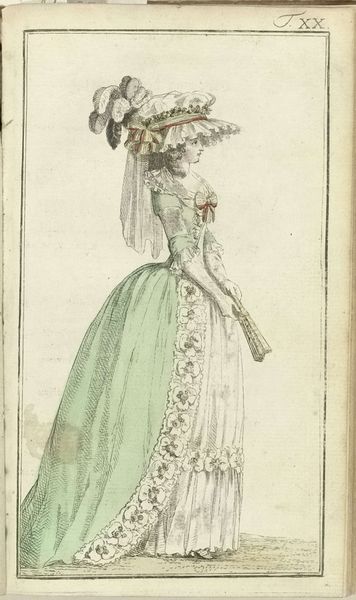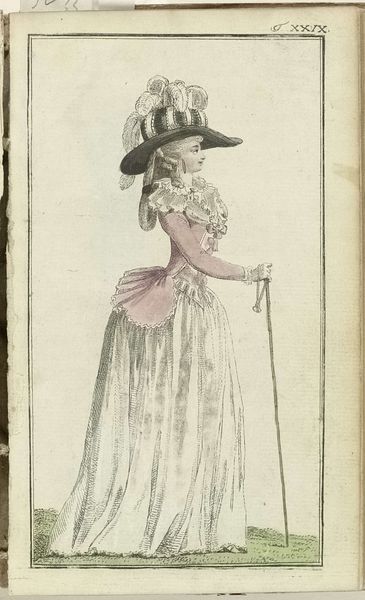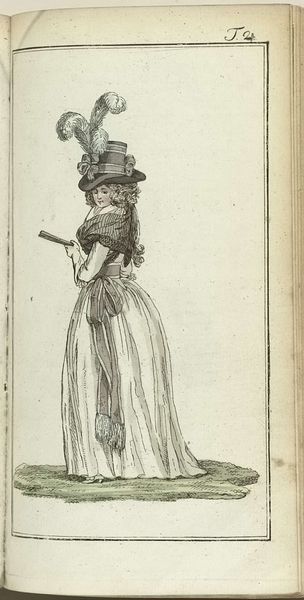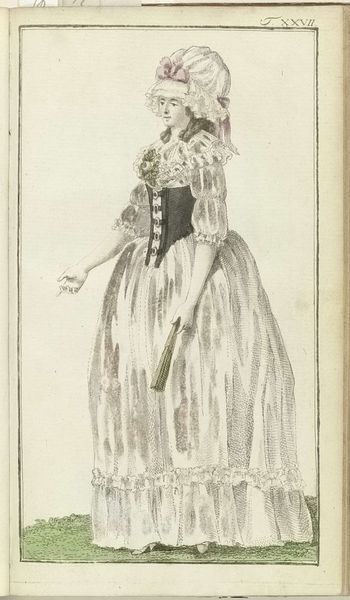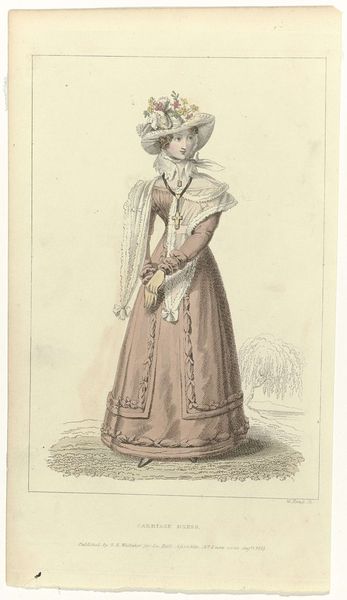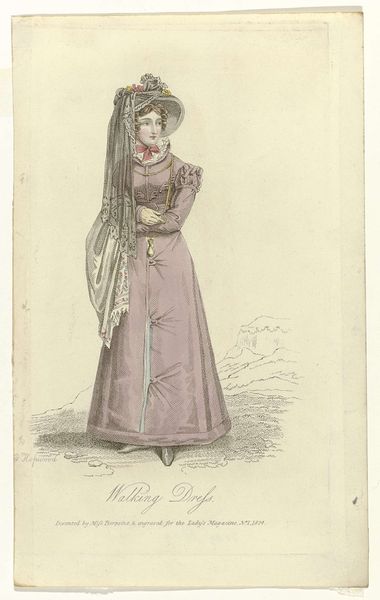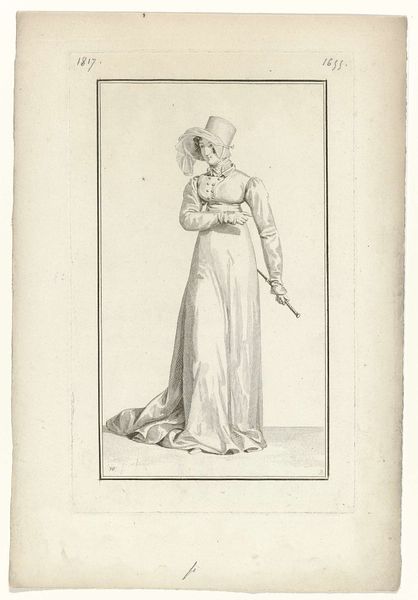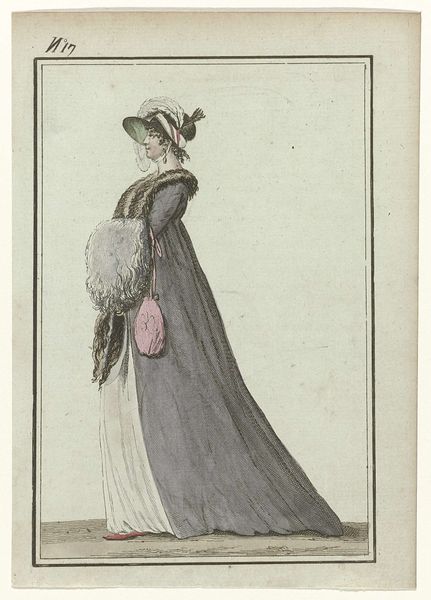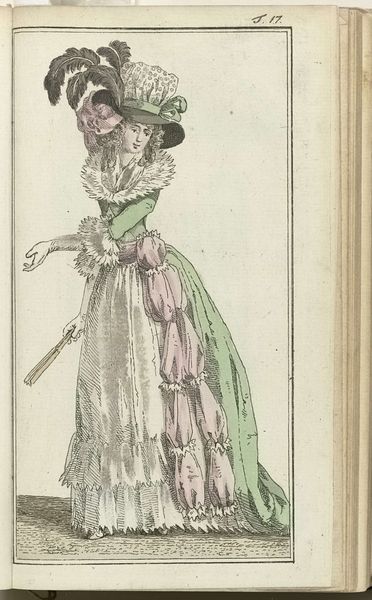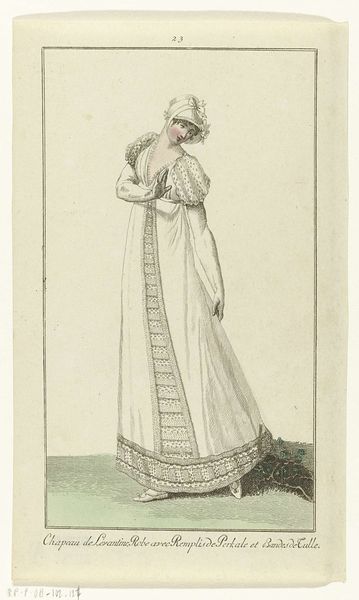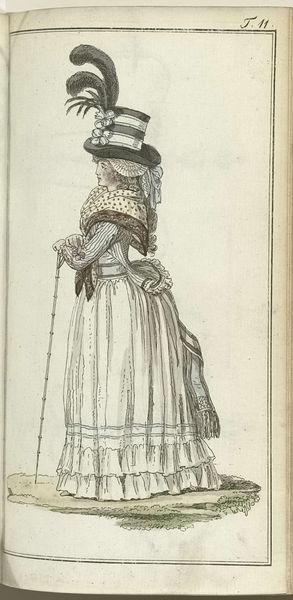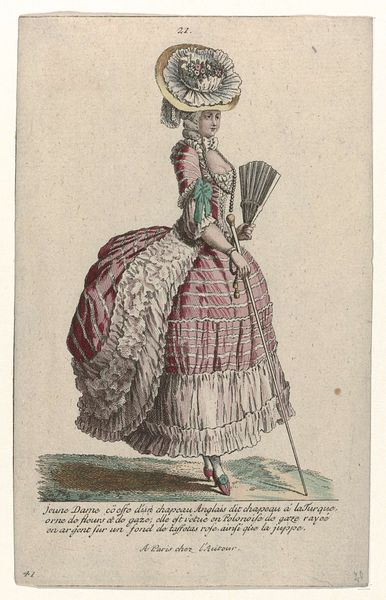
Gallerie des Modes et Costumes Français 1787, No. lll, Pl. 338: Rodingotte de taffetas violet (...) 1787
0:00
0:00
Dimensions: height 227 mm, width 163 mm
Copyright: Rijks Museum: Open Domain
This fashion plate from 1787, etched by Pierre Charles Baquoy, presents an elegant lady adorned in violet taffeta. Dominating the image is her oversized hat, a symbol of status and the era's extravagant fashion. The hat, much like the towering hairstyles of the time, speaks of a society consumed with outward appearances. We see echoes of this emphasis on presentation in earlier eras; consider the elaborate ruffs of the Elizabethan period. Like the ruff, the large hat serves to frame the face, drawing attention to the wearer's countenance. But it’s not merely about vanity; it's a carefully constructed persona, a mask worn to navigate social complexities. The violet hue, with its historical associations of royalty and piety, adds another layer of meaning. Violet's subtle connection to mourning can also be traced across time and cultures, with the use of specific colors to represent emotional states or life stages. These recurring motifs reveal our enduring fascination with self-expression and the silent language of clothing. It shows us how we use garments as cultural symbols, constantly reinventing ourselves while subconsciously echoing ancestral patterns.
Comments
No comments
Be the first to comment and join the conversation on the ultimate creative platform.
